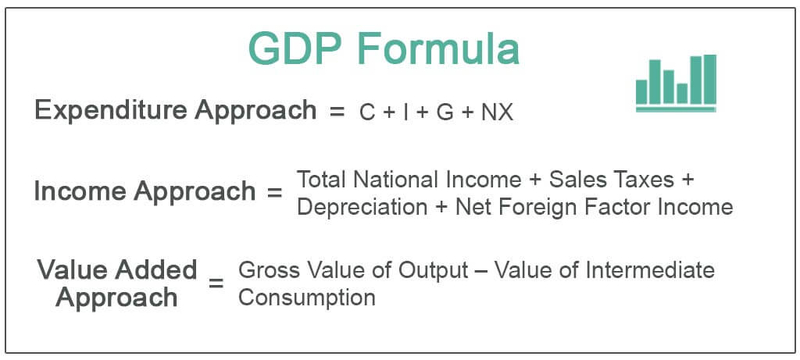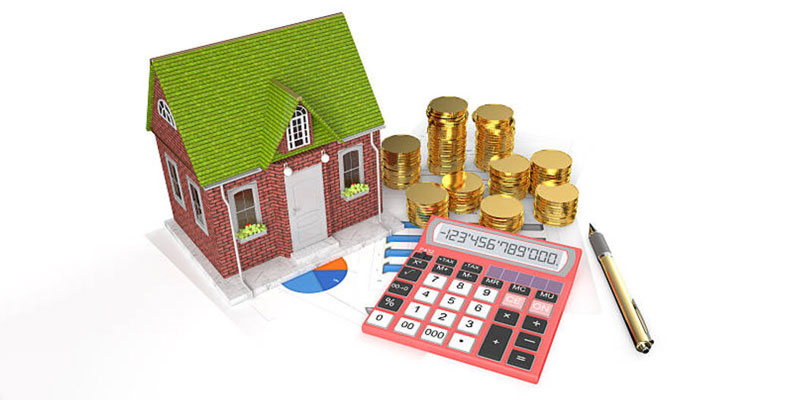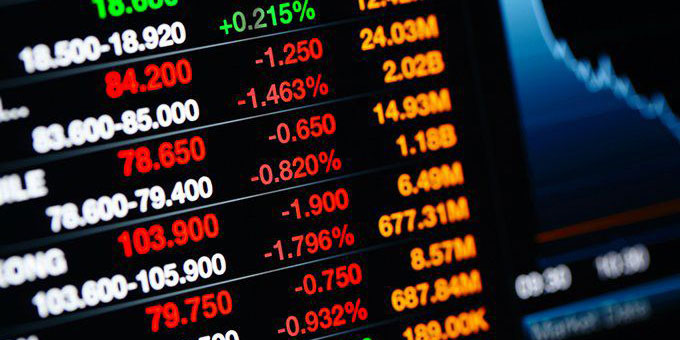In economics, the Gross Domestic Product (GDP) is a very important measure. It helps us understand how well the economy of a country is doing by showing the total value of goods and services made in that nation during a certain time frame. This article will explain what makes up the GDP formula, its parts, and details about it. Moreover, it will go into practical uses of GDP in economic analysis. This includes its importance for making policies, deciding on investments, and overall evaluation of a country's economy.
Gross Domestic Product (GDP) Formula - A Comprehensive Breakdown
GDP is found using three main methods: production way, expenditure way, and income way. The production method calculates GDP by adding up the value of all goods and services made inside a country. It requires summing the values added at every stage of making things, from raw materials to finished products. Next, the spending method looks at GDP by summing up all expenses on goods and services within the economy. This involves consumption, investment, government expenditures, and net exports (exports minus imports). Finally, through the income method, we calculate GDP by adding up all incomes received from individuals and businesses in an economy like wages, profits, or taxes.

When we think about the GDP formula, it becomes very important to understand that every approach gives us a different understanding of the economy. The production way shows the value made in each production stage while the expenditure method looks at how economic activity turns into spending. The income approach gives a view of how income is divided and where earnings come from inside the economy.
- Consideration: GDP calculations may vary depending on the chosen approach, necessitating consistency in methodology for accurate comparisons over time or between countries.
- Caution: When interpreting GDP figures, it's essential to account for factors such as inflation, as nominal GDP may overstate economic growth in periods of rising prices.
Understanding the Components of GDP Calculation
GDP consists of four main parts: consumption (C), investment (I), government spending (G), and net exports (NX). Consumption is the amount spent by households on goods and services. The investment includes spending on capital goods like machines, equipment, and buildings to improve production in the future. Government spending refers to money that is used by the government for public goods and services. This includes areas like defense, education, or infrastructure development. Net exports show the contrast between what a country sells abroad versus what it buys from other countries - this reveals its external trading equilibrium.
Furthermore, it is crucial to understand the importance of every component in boosting economic activity. Consumption, being the biggest element of GDP, shows consumer trust and buying capacity that impacts overall economic demand. Investment drives productivity and creativity which sets up a base for growth in the future. Spending made by the government plays a key part in giving public goods and services, boosting demand, as well as backing up economic steadiness. Net exports, even though they can be unstable at times, help to grow the economy by improving trade balances and promoting worldwide competitiveness.
- Consideration: Changes in consumer behavior, investor sentiment, government policies, and global trade dynamics can significantly impact the composition and growth trajectory of GDP components.
- Caution: Fluctuations in net exports may be influenced by factors such as exchange rates, trade agreements, geopolitical tensions, and shifts in global demand, necessitating careful monitoring and analysis.
Interpreting GDP Figures and Economic Performance
GDP numbers work like a gauge for the economic performance of a country, showing if its economy is growing or getting smaller. When there is positive GDP growth, it means the economy is expanding and this can be seen with more production happening along with more jobs and incomes being generated. On the other hand, when there's negative GDP growth it shows that our economy's getting smaller and we can see this through less production taking place as well as higher levels of unemployment along with reduced ability to purchase goods or services due to decreased total income within the nation. In addition to this, GDP growth rates give an understanding of how lasting and steady economic expansion is over some time. This helps in decision-making for policymakers and investors.
Looking deeper than simple GDP numbers, it is important to understand the subtleties in economic performance for knowledgeable analysis. We can learn about the average living standard of a country by studying its GDP per capita, which shows how income is distributed and inequality among people. Additionally, when we look at sectoral contributions to GDP it helps us understand more about economic variety and structural change. This lets us recognize what parts of the economy are growing or may have vulnerabilities as well as understanding where growth comes from across different industries.
- Consideration: GDP growth alone may not capture the full picture of economic well-being, necessitating complementary indicators such as employment rates, inflation, income distribution, and poverty levels for comprehensive analysis.
- Caution: Fluctuations in GDP growth rates may be influenced by temporary factors, such as natural disasters, policy changes, or external shocks, requiring careful evaluation to discern underlying trends and implications for long-term economic health.
Utilizing GDP Data for Policy Formulation and Analysis

Governments and policymakers rely on GDP data to formulate macroeconomic policies aimed at fostering economic stability, growth, and development. By analyzing GDP trends, policymakers can discern economic strengths, weaknesses, and vulnerabilities, enabling targeted interventions to address prevailing challenges. Moreover, GDP data aids in assessing the effectiveness of policy measures, facilitating adjustments as needed to achieve desired economic outcomes. Additionally, investors utilize GDP forecasts and trends to identify potential opportunities and risks in financial markets, guiding investment strategies and portfolio allocation decisions.
In addition to policymaking and investment decisions, GDP data plays a crucial role in international comparisons and benchmarking. Comparative GDP analysis allows countries to evaluate their economic performance relative to peers, identify best practices, and learn from successful strategies implemented elsewhere. Furthermore, GDP data serves as a basis for international cooperation and development initiatives, guiding resource allocation, aid distribution, and strategic partnerships aimed at promoting global prosperity and sustainability.
- Consideration: GDP data may undergo revisions over time as more accurate information becomes available, requiring ongoing monitoring and adjustment of policy responses and investment strategies.
- Caution: Overreliance on GDP as a sole indicator of progress or economic health may overlook important socio-economic dimensions, such as environmental sustainability, social equity, and quality of life, emphasizing the need for comprehensive and balanced metrics for policy formulation and evaluation.
Conclusion
Gross Domestic Product (GDP) is a crucial element in the study of economics. It gives us very important information about how well an economy is doing and where it might be going next. Knowing the formula for GDP and what makes up its parts helps different people understand economic patterns, judge policy effects, and choose wisely. Those who create fiscal and monetary policies, understand financial markets, or assess economic situations like policymakers, investors, or analysts, all need to have a complete understanding of GDP. It is very important for managing the economy well and making good choices about it.




